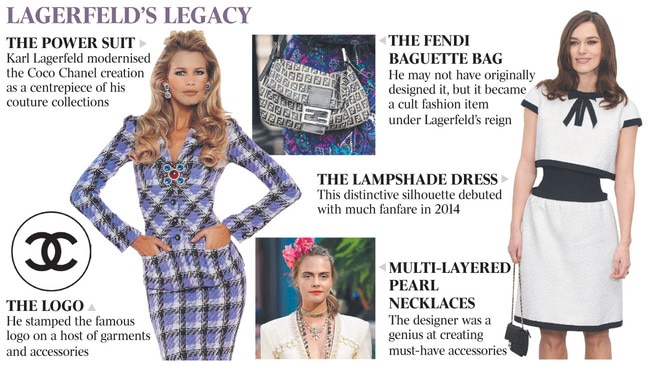Rise of the fashionistas: the biggest names in style are no longer men
Karl Lagerfeld’s death coincides with a changing of the guard in the industry.

The passing of fashion designer Karl Lagerfeld this week is a stark reminder about the changing face of the fashion industry. A giant among designers, the 85-year-old was a household name even to those who purport not to be especially interested in the world of high fashion.
As one of the most revered designers of the 20th century — alongside such names Cristobal Balenciaga, Christian Dior, Hubert de Givenchy, Valentino, Yves Saint Laurent and later Giorgio Armani — Lagerfeld outworked them all over seven decades and was the only one to remain truly relevant into the 21st. Through constant evolution, he managed the herculean task of bridging the gap from the golden days of haute couture, when he first started his career in the 1950s, to the modern industry today — and always ahead of the pack. Only Armani, still working at 84, and the retired Valentino, 86, have enjoyed similar recognition.
But there is a shift currently taking place in high fashion, with an influx of women heading up major houses, many appointed in just the past few years.
For a global industry now worth upwards of $3 trillion, largely led by women on the spending side of the equation, it has always been a great anomaly in fashion that the biggest names in womenswear were men. Often gay men, certainly, who bring a different type of male gaze to the female form, perhaps an idealistic one.
The other most famous name in 20th century fashion — Coco Chanel — famously liberated women from their restrictive wardrobes (before Dior trussed them up again with his New Look in 1947). And in a sense it is in her footsteps that the new breed of female designers is treading. Of course there have been more recent trailblazers, such as Miuccia Prada, Vivienne Westwood and Donatella Versace, but they have tended to be in a minority at the pinnacle of the industry.
In a well-prepared move, just hours after the news of Lagerfeld’s passing, Chanel announced his successor would be the designer’s right-hand woman of more than 30 years, Virginie Viard. A name unknown to those outside the fashion industry, perhaps, but someone who, as the house’s former fashion studio director, understands all too well the inner machinations of the company and its customers.
The house of Dior now has its first female creative director, Maria Grazia Chiuri, who has from her first collection driven a feminist agenda at the house — that spring 2017 collection included a T-shirt emblazoned with “We should all be feminists”.
Givenchy, too, has its first female at the helm. Endowed with the job of designing Meghan Markle’s wedding dress, Clare Waight Keller has taken the luxury brand back to something more resembling the elegant work of its founder, who passed away a year ago, aged 91. Women are also emerging from the assistant roles and back rooms of fashion houses to take a leading role. After a line-up of top male designers including Martin Margiela and Jean Paul Gaultier, Hermes took a punt in 2014 on the unknown Nadege Vanhee-Cybulski to design its fashion offering.
In 2017, French house Chloe appointed another unknown, Natacha Ramsay-Levi, as creative director.
For a house founded by Gaby Aghion in 1952, Chloe is an interesting case in point. Lagerfeld worked there in the 1960s and 70s, at a time when ready-to-wear was beginning and women were looking for more freedom in their wardrobes to parallel that in their lives. Lagerfeld, in the way he later did at Chanel and Fendi, managed to follow Aghion’s ethos and evolve it. Since he left, the brand is one of the few to hire only women as head creatives. One was Stella McCartney, who has gone on to lead her own luxury brand, followed by Phoebe Philo, Waight Keller and now Ramsay-Levi.
Speaking of Philo, all eyes are on the British designer to see where she might land next after her sabbatical. If Coco Chanel was the founder of women’s liberation in fashion, Philo is her heir apparent, often considered the thinking woman’s designer. There are still rumours she may take the helm at Chanel.
During her time as creative director of Celine, she turned the brand into one of the most revered in fashion. This was fashion for the female gaze — intellectual, cool, artistic. Women rejoiced. After a decade, she left. And under its new designer, Hedi Slimane, it is the antithesis of what Philo created.
But what do the female designers in this new wave have in common? For one thing, it’s not about them. It’s about the fashion. It’s about the customer. There is little room in the current fashion business model for godlike designers, male or female; the proof is in the results. Which makes Lagerfeld’s seven-decade reign unlikely to be repeated — by anyone.
But we are, finally, heading towards a sense of parity at the top of the fashion world. And while it might be the end of one era, it’s the beginning of another.


